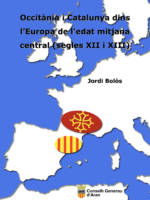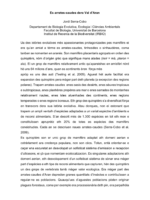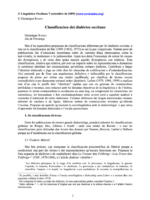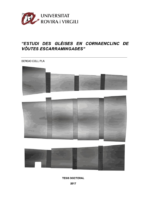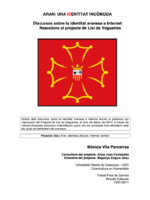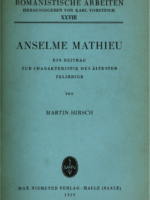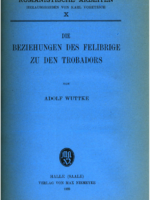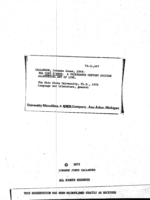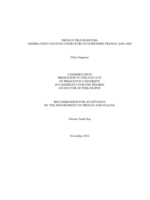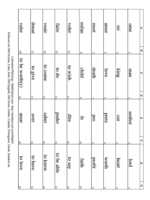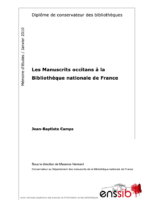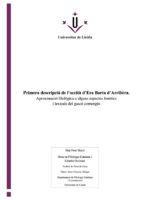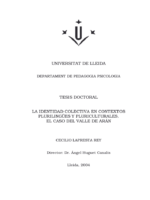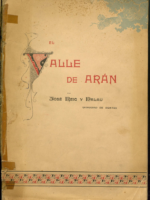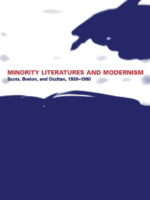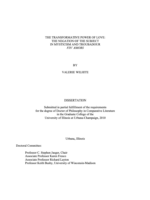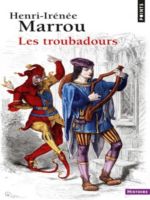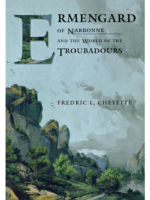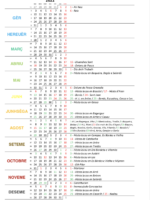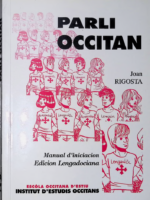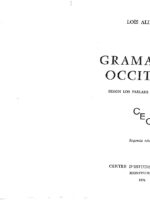Recommended Books
-
Occitània i Catalunya dins l’Europa de l’edat mitjana central (segles XII i XIII)
0,00 €S’han fet nombroses recerques i s’han publicat molts llibres sobre els càtars i llur religió, sobre la persecució del catarisme, sobre la relació entre Catalunya i les terres d’oc i sobre la conquesta i la colonització d’Occitània per part dels francesos, tant amb relació a aspectes religiosos com bèl·lics, socials, antropològics i, fins i tot, arqueològics i filològics.
D’una manera especial, s’han dut a terme força estudis sobre el paper que tingueren els catalans en aquest moment clau de la història occitana.3 Tots aquests temes ens interessen perquè permeten d’entendre realitats fonamentals que han pesat en la història de Catalunya i d’Occitània, i, també, no ho podem pas oblidar, en la història de la resta d’Europa i del món. Cal que ens adonem que si ens apropem a la història d’Occitània de l’edat mitjana central descobrim, en el fons, l’aparició d’unes lluites pel poder, la riquesa i el domini semblants a les que causaren molts altres processos de conquesta i de colonització que hi hagué en diferents països europeus, des de l’any 1000 fins a l’any 1348.
Foren processos que tendiren a la uniformització cultural i religiosa, que molts cops dugueren, ja al final de l’edat mitjana, a la consolidació d’unes fronteres molt ben delimitades, les quals, amb el temps, sovint han esdevingut símbol d’uns estats i s’han convertit en presó d’un conjunt de països dominats i colonitzats, a l’inici potser d’una manera brutal, amb el temps de vegades d’una manera més subtil.
A continuació fixarem l’atenció en diversos aspectes d’aquest període de l’edat mitjana central (entre els canvis de l’any 1000 i la crisi del segle XIV).
-
Classificacion dei dialèctes occitans
0,00 €Mai d’un especialista prepausan de classificacions diferentas per lei dialèctes occitans, e mai se la classificacion de Bèc (1995 [1963], 1973) es uei la pus vulgarizada. Tanben pron de publicacions fan d’omissions recurrentas subre de varietats fòrça interessantas coma lo sud-vivarés, lo mentonasc o lo judeooccitan. Aquò nos dona l’escasença de cercar lei causas dei divergéncias e de veire dins quina mesura aquelei divergéncias son relativas. Tota classificacion, relativa que relativa, pòt aver un impacte subre lei representacions e dramatizar lo sentiment identitari dei renaissentistas qu’utilizan certanei dialèctes. Contribuís a fargar l’identitat dialectala e jòga un ròtle dins lei chausidas de codificacion e d’estandardizacion. Aicí pretendi pas de fixar una arquitectura definitiva e indiscutibla per la classificacion: prepausi de pistas per trobar una sintèsi equilibrada, per clarificar de tèrmes sovent contradictòris e per desmontar certanei mites identitaris. Lafont (1979, 1996, 1999) a explicat mai d’un còp lo perilh deis “identitats” rigidas que son en generau de construccions artificialas e recentas, sens relacion amb lei donadas objectivas de la lingüistica e de l’istòria; pasmens lo mitan renaissentista (o occitanista au sens larg, en comprenent lei classicistas, lei mistralencs, lei bonaudians e leis escòladaupoïstas) rèsta sovent sord a aqueleis analisis e contunha d’entretenir de mites dialectaus. Certanei defensors dei lengas minorizadas vesinas, subretot de catalans e de ligurs, fabrican tanben de construccions erronèas qu’afèctan l’occitan. Prepausi un apròchi qu’assòcia la sociolingüistica amb la dialectologia1 e que cèrca d’apreendre lei donadas dialectalas a l’escala panoccitana.
-
Estudi des glèises en cornaenclinc de vòutes escarramingades
0,00 €Era Val d’Aran se place ena cara Nord des Pirenèus. Es sues caracteristiques geografiques e climatiques, atau coma era sua orientacion cap ar Atlantic an condicionat ath long dera istoria toti es factors dera societat entre eri era arquitectura e era construccion. Aguest ei un des principaus motius entà qu’era sua arquitectura age agut ua difusion escassa. Siguec a compdar deth torisme pirenenc provinent de França que siguec coneishuda. Violet le Duc, Elies Rogent, Puig i Cadafalch, Domenech i Monater e Basegoda Nonell son autors que posterioramente realizen aportacions scientifiques subergessentes.
Era presenta investigacion se plantege en contèxte dera assignatura de Construccion VI dera Escola d’Arquitectura de Reus dera Universitat Rovira i Virgili. Es trabalhs practics des alumnes suscitèren er interès ena generacion dera informacion damb metodes de captura massiva de donades coma er escanèr lasèr. Es campanhes d’escaneg lasèr se realizen en totes es glèises dera Val d’Aran, en tot hèr-ne un totau de 43 e sonque se prescindís der escaneg dera glèisa de Baqueira e dera glèisa consagrada de Mijaran. Autant ua coma era auta son de recenta construccion.
Aguesta Tèsi Doctorau se centre en estudi des glèises deth prumèr romanic segontes era classificacion d’Emmanuel Garland. Ei vertat qu’autors coma Puig i Cadafalch heren a conéisher e descriueren quauques glèises, principaument es glèises basilicaus. Ua des caracteristiques mès importantes dera arquitectura romanica ei er us de voutes. Puig i Cadafalch e Basegoda Nonell sagèren d’explicar era sua origina e forma.
Un prumèr objectiu ei eth de generar ua documentacion planimetrica, realizada a compdar de bromes de punts que complemente era ja realizada per Domenech i Montaner, Puig i Cadafalch e Bassegoda Nonell.
Un dusau objectiu consistís en estudi des construcciones prescientifiques. Aguestes plantegen un especiau interès entà determinar quines son es principis en qué se basauen es constructors des edificis romanics. Es obres de fabrica dera Val son absoludament deformables e formarien part d’aguest grop de construcciones damb aguesta fenomenologia caracteristica. Es glèises romaniques dera Val d’Aran son un conjunt unitari d’edificis qu’an estat poc alteradi ath long dera istoria.
Es resultats mostren dues tipologies d’edificis qu’atien a principis geometrics e d’estabilitat plan diferenti. Tanben mostre era viabilitat deth metode seguit entar estudi des assetaments e esbauçaments en tot èster d’utilitat tanben entà cimentar es bases entà obtier critèris de simplificacion que permeterà estudis damb elements finits. -
Aran: una identitat incòmoda
0,00 €Anàlisi dels discursos sobre la identitat aranesa a Internet durant la polèmica per l’aprovació del Projecte de Llei de Vegueries, el mes de febrer de 2010. A través de l’estudi d’aquests discursos s’identifiquen quins són els principals trets identitaris amb els quals es defineixen els aranesos.
-
-
The “Cort d’Amor”: A Thirteenth Century Occitan Allegorical Art of Love
0,00 €With the exception of the romance of Flamenca, and to a lesser extent, the Arthurian romance of Jaufre. the medieval Occitan narrative poems of the thirteenth century have attracted very little scholarly attention, and among the shorter novas, only one, the Castla-gllos by Raimon Vidal, has been published recently. No full length study of Occitan allegory has yet appeared, al though one scholar,. Marc-RenS Jung, did devote one chap te r to th is topic in a broad survey of the medieval allegorical poem: Etudes sur le poeme allégorlque en France au rao.yen age. Unfortunately, nearly all studies of medieval allegory that have appeared In the last two decades take one or another of the great epic allegories like The Romance of the Rose. The Divine Comedy, or The Canterbury Tales, as. either point of departure or point of arrival, and as a result, the ensuing source studies or definitions are inevitably distorted by the magnetic field that such masterpieces ordinarily deploy. This tendency is particularly disappointing (in view of the fact that the Occitan allegories are, for the most part, earlier than the Romance of the Rose of Guillaume de Lorris, the first of these epic allegories. For this reason, if for no other, they deserve to be considered for and .by themselves.
-
French troubadours: assimilating Occitan literature in northern France (1200-1400)
0,00 €French Troubadours explores the reception of Occitan lyric in France in the thirteenth and fourteenth centuries, that is, in the period corresponding to the Albigensian Crusade (1209–1229) and its aftermath, which witnessed France’s annexation of the majority of Occitania. Surveying the corpus of French romances that quote Occitan song (Part I) and French songbooks that also contain Occitan lyrics (Part II), it shows how Occitan poems–from the very beginning of their French reception–were subtly incorporated into the French canon by way of imitation, compilation with French texts, and adaptation to the French sound system.
Chapter 1, on Jean Renart’s Roman de la rose, shows how the troubadours are collapsed into a set of francophone lyrics, which are enjoyed not in France but by the Holy Roman Emperor. French-language lyric, and other forms of French culture, are presented as the degre zero of culture in the German Empire, while Germanic languages are treated as foreign. In Chapter 2, I turn to Gerbert de Montreuil’s Roman de la violette, which, like Renart’s Rose, appropriates troubadour lyrics linguistically, and–in one instance–also associates them with the Holy Roman Empire. Here, however, the Holy Roman Empire is not a neutral cadre, but a negative space. Chapter 3, devoted to Richard de Fournival’s Bestiaire d’amour, shows how Richard obscures the first-person language and rhyme of the troubadour poems he quotes.
In Part II, I turn to the set of French songbooks that transmit Occitan lyric. A study of compilation patterns reveals that, rather than being transmitted in a separate section of songbooks, Occitan poems–which are often Gallicized–are almost always interspersed with French lyrics. Consequently, a medieval reader who encountered the troubadours only in French transmission would have little chance of recognizing their cultural specificity. In Chapter 5, I explore the “pseudo-Occitan” corpus, which comprises pieces that contain Occitan phonological coloring but were probably composed by francophones. I show that these pieces occur primarily in a lower register. This trend fictionally repositions Occitan lyric as both “primitive” and–by extension–as anterior to French lyric.
-
Old Occitan Flash Cards
0,00 €Liberation Philology libphil@aol.com.
Software for Icelandic, Norwegian, Danish, Swedish, Finnish, Old Norse, Gothic, Latin, Old English , Greek, Sanskrit etc. -
Les manuscrits occitans à la Bibliothèque nationale de France
0,00 €La Bibliothèque nationale de France conserve, pour le domaine de la littérature oc- citane du Moyen Âge, la plus vaste collection de manuscrits au niveau mondial. Pourtant, en dépit de son extraordinaire richesse, cette collection n’a qu’assez rarement été prise en compte en tant que telle et, quoique très étudiée par les chercheurs, demeure à certains égards méconnue. Une cause probable en est le fait que les manuscrits occitans, cotés en Français ou en Latin, ne constituent pas un fonds cohérent à l’origine unique, mais ont été acquis en divers lieux et en divers temps, sans faire l’objet d’une cotation propre. Ce mémoire se donne pour ambition de fournir un outil de connaissance de cette collection, qui soit profitable aux démarches de valorisation et de conservation le concernant.
-
Primera descripció de l’occità d’Era Barta d’Arribèra
0,00 €Dins del domini gascó, i alhora reflectint la situació occitana general, hi ha una variació interna notòria entre les diferents varietats que omplen el territori. En aquest sentit, el comengès, que enclavem en el gascó pirinenc oriental (subdialecte que abasta una zona que comprèn la Vall d’Aran, l’àrea de La Varossa, el Comenge meridional i el Coserans), es diferencia d’una manera prou evident d’altres variants més occidentals, justament per la seua condició de parlar fronterer, situat en una zona interferencial, en paraules de Bèc (1968), entre el gascó i el llenguadocià. El treball que prossegueix mira de fer una descripció d’alguns aspectes fonètics i lexicals d’un dels municipis de parla comengesa, Era Barta d’Arribèra, localitzada estratègicament a pocs quilòmetres de Sent Gaudenç, capital històrica del Comenge i de l’antiga comarca del Nebosan.
-
La Identidad colectiva en contextos plurilingües y pluriculturales
0,00 €La comarca del Valle de Arán se encuentra situada en el extremo nor-occidental de la provincia de Lleida, en plenos Pirineos. En las últimas décadas, esta comarca está experimentando un profundo proceso de transformación sociodemográfica y cultural.La situación viene determinada por varios aspectos:
A,- Un fuerte incremento de población, proveniente principalmente de la inmigración.
B,- La coexistencia en el territorio de tres lenguas oficiales; el occitano-aranés, como lengua propia de la comarca, el catalán y el castellano.
C,- Como consecuencia de los dos primeros aspectos, una situación de contacto entre lenguas y culturas diferenciadas.Con este marco de fondo, en nuestra investigación nos proponemos analizar el proceso de construcción de la identidad colectiva en el territorio. A partir del uso combinado de técnicas de investigación social cuantitativas y técnicas de investigación social cualitativas, se demuestra el importante papel que juega la lengua propia, tanto en la definición de la identidad colectiva aranesa como en su proceso de construcción. La articulación de este fenómeno con la situación social de la lengua, caracterizada por su situación minorizada, una conciencia de reisgo real de pérdida de su función comunicativa y, asociada a ella, de su función simbólica, permite comprnder la génesis de actitudes, acciones e incluso diferentes conflictos sociales que se producen en el territorio.
-
Minority Literatures and Modernism: Scots, Breton, and Occitan, 1920-1990
0,00 €A quiet renaissance has been unfolding in certain parts of Europe – a renaissance of literature written in minority languages. In this book, William Calin explores the renaissance through an examination of twentieth-century works in Scots, Breton, and Occitan minority languages flourishing inside the borders of the United Kingdom and France.
For each of the three bodies of literature Calin considers major authors whose works include novels, poetry and plays, and shows that all three literatures have evolved in a like manner, repudiating their romantic folk heritage and turning instead to modern and postmodern concerns. Drawing on current critical theories in periodization, postcolonialism and cultural studies, Calin raises a range of comparative questions: Is there a common form of narrative prevalent in minority cultures that is neither realism nor metafiction? Is the minority-language theatre limited to plots treating past history and the rural present? What is the relationship between the minority literature and literature in the national language? What kind of history should be written on the literatures of Scotland, Brittany and the South of France, manifest in their several languages?
Calin’s pioneering study is the first comparative scrutiny of these minority literatures and the first to bring all three together into the mainstream of present-day criticism. His work demonstrates the intrinsic importance in their twentieth-century renewal, as well as their contribution to global culture, in both aesthetic and broadly human terms.
-
Songs of the Women Trouvères
0,00 €We bring together here the songs of all medieval women whose names are recorded in the rubrics or tables of contents of various Old French manuscripts as composers of songs or as participants in jeux-partis and tensons (debate poems). The songs by women whose names are known are relatively few in number, but there were undoubtedly many more women composers, and whereas their names are lost to us, some of their songs are probably still extant, though bereft of proper attribution. Accordingly, we have chosen to include a generous sampling of anonymous works—chansons de femme (women’s songs), rondeaux, and motets—both because they offer a wide variety of female voices and because some of these pieces may well have been composed by women. We hope in this way to rectify a situation that for many years has denied women their rightful place in the pantheon of Old French medieval lyric poets.
For, as surprising as it may seem, the very title of our anthology, Songs of the Women Trouvères, makes a bold, even controversial, statement. Although nearly all scholars now acknowledge the existence of medieval women who composed poetry in other romance languages (Occitan, Spanish, Italian, Galician- Portuguese), most have accepted without question Pierre Bec’s contention that none of the songs composed in northern France in the twelfth or thirteenth centuries are the product of a woman trouvère (Bec 1979: 236). A number of Old French songs feature women’s voices ( féminité textuelle), particularly in the lyric type known as the chanson de femme. However, féminité textuelle does not necessarily imply female authorship (féminité génétique), to use a distinction introduced by Bec himself (1979: 235–36). The majority of these songs are anonymous, but because most of the ones that are attributed in the manuscripts are credited to a male author, Bec has concluded that no Old French songs of the period in question were composed by women. Although many have agreed with Bec, the literary history of the past 125 years includes a few dissenters who base their opinion on evidence that until recently was either ignored or not seriously considered. A brief summary of that history is instructive, as it highlights the major arguments for and against the historical existence of the women trouvères.
-
The transformative power of love
0,00 €This dissertation compares the works of select troubadours with three mystical tracts in order to present the similarities found in these two literary traditions. Mystical writings have a far longer history reaching into antiquity and continuing until the present day. The traces in the manuscript traditions situate in the late eleventh century a new poetic form in Occitan with a focus on earthly love. The love as it is described in the songs of the composers who write or sing about it comes to be called bon amors or fin’ amors, the term we use today to name the love of the troubadour tradition. The period of lyrical production in Occitan by troubadours speaking of fin’ amors does not endure more than three centuries if we begin our count with Guilhem IX (1071-1126) and close with the poet so often called the last of the troubadours, Guiraut Riquier (1254-1292). These two traditions of love literature are thus distinguished by the nature of their literary histories and also by the loves they describe. Despite this, the shape of the loves they discuss as well as the language used to speak about love are not so different.
-
Les Troubadours
0,00 €Il serait temps de nous défaire enfin de ce poncif du troubadour errant, la guitare au côté, égayant de ses ballades les longs loisirs des tristes châteaux gothiques. C’est à cette image conventionnelle et fade que Henri-Irénée Marrou entend substituer la véritable identité et histoire des troubadours, en analysant plus généralement la “renaissance” du XIIe siècle.C’est à cette époque, en pays d’Oc, que les troubadours ont inventé l’amour, le mot comme la chose. C’est l’idéal quasi mystique de l’amour courtois qu’ils célèbrent dans leurs chansons, amour humain bien réel qui se trouve cependant presque élevé à la dignité d’un culte.La première édition de cet ouvrage date de 1961.Henri-Irénéee Marrou (1904-1977) est un des grands historiens de l’Antiquité tardive, spécialiste d’Augustin et de l’augustinisme ; a notamment publié au Seuil, L’Eglise de l’Antiquité tardive (1985) et Saint Augustin et l’augustinisme (2003).
-
Les troubadours. Une histoire poétique
0,00 €Les troubadours sont, au XIIe siècle, les auteurs, immensément admirés, des plus anciennes chansons d’amour composées dans une des langues nouvelles de l’Europe, la langue d’oc. Le tremblement du désir et celui de la crainte, la ferveur et la frustration, la jalousie et la jouissance, tout cela ils l’ont dit de façon si nouvelle et si intense que leurs chansons résonnent encore dans les mots d’amour d’aujourd’hui. Le beau livre de Michel Zink rend sa fraîcheur à cette poésie vieille de neuf siècles en la suivant dans ses méandres, en disant au fil des poèmes, qu’il cite en grand nombre, juste ce qu’il faut pour qu’elle nous parle, pour qu’elle nous enchante et pour qu’elle vive en nous.
-
Ermengard of Narbonne and the World of the Troubadours
0,00 €Ermengard of Narbonne. Even to specialists in the history of the Middle Ages her name is hardly known. Eleanor of Aquitaine, who was wife to two kings and the mother of three more? Yes, there is a name-and a story-to conjure with. Countess Marie of Champagne, Eleanor’s daughter by King Louis VII of France, patron of Chretien de Troyes, the poet who in- vented the Arthurian romance? She too is better known, if only because of the writers who thronged to her court. Ifwe know anything about the Middle Ages we have at least heard of King Richard the Lionheart and his brother King John, who was forced to grant the Magna Carta at Runnymede, both of them sons of Queen Eleanor. We have also surely heard of the mythical King Arthur and his Round Table, of Lancelot and Guinevere, of the quest for the Holy Grail, all of them largely the creation of Chretien. Ermengard, however, has fallen off the historical map.

